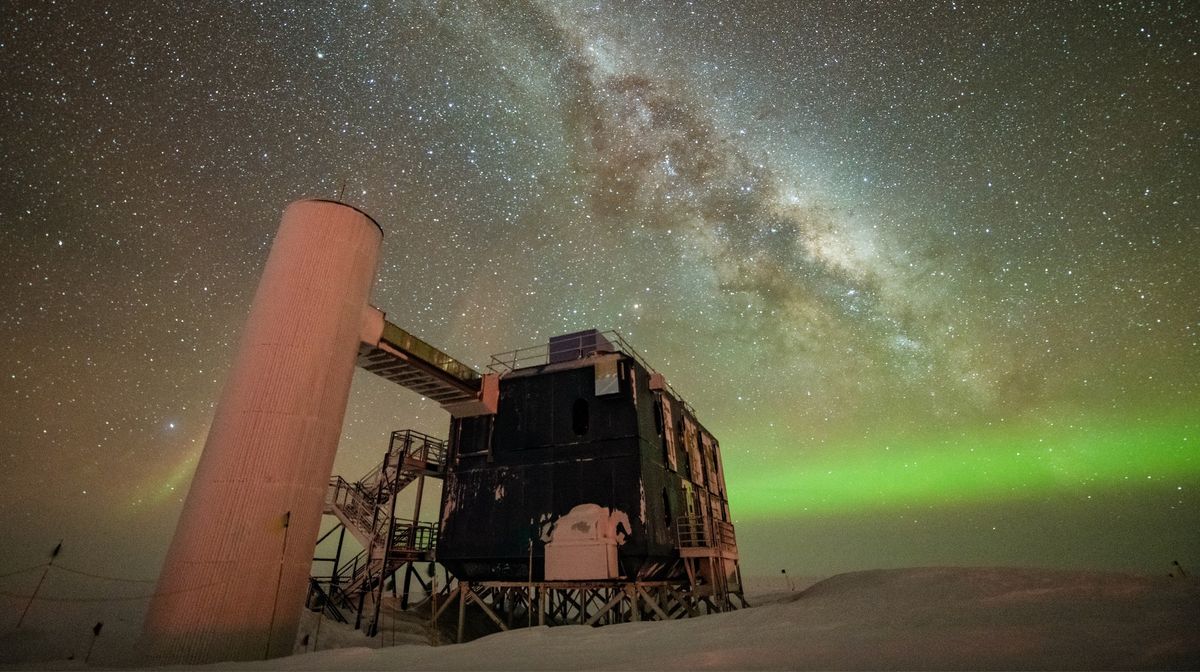Scientists find 'ghost particles' spewing from our Milky Way galaxy in landmark discovery (video) [View all]
By Charles Q. Choi published 1 day ago
'This observation of high-energy neutrinos opens up an entirely new window to study the properties of our host galaxy.'
Astronomers have detected high-energy neutrinos coming from within our Milky Way galaxy, potentially opening up an exciting new window of research, a new study reports.
Neutrinos are extraordinarily difficult to spot, as they rarely collide with atoms. A light-year's worth of lead would stop only about half of the neutrinos flying through it (which explains why neutrinos have been dubbed "ghost particles" ).
Neutrinos are created from radioactive decay, such as in nuclear reactors, or when extraordinarily high-energy particles strike atoms. The friskiest types feature energies millions to billions of times higher than those produced by the fusion reactions that power stars.

The IceCube Neutrino Observatory is seen under a starry night sky, with the Milky Way appearing over low auroras in the background. (Image credit: Yuya Makino, IceCube/NSF)
High-energy neutrinos are known to originate from galaxies beyond the Milky Way. But researchers have long suspected that our own galaxy is a source as well. For example, when cosmic rays — atomic nuclei moving at nearly the speed of light — strike dust and gas, they generate both gamma rays and high-energy neutrinos. Previous research has detected gamma rays from the Milky Way's plane, so scientists have expected high-energy neutrinos from there as well.
More:
https://www.space.com/high-energy-neutrinos-milky-way-galaxy-icecube
